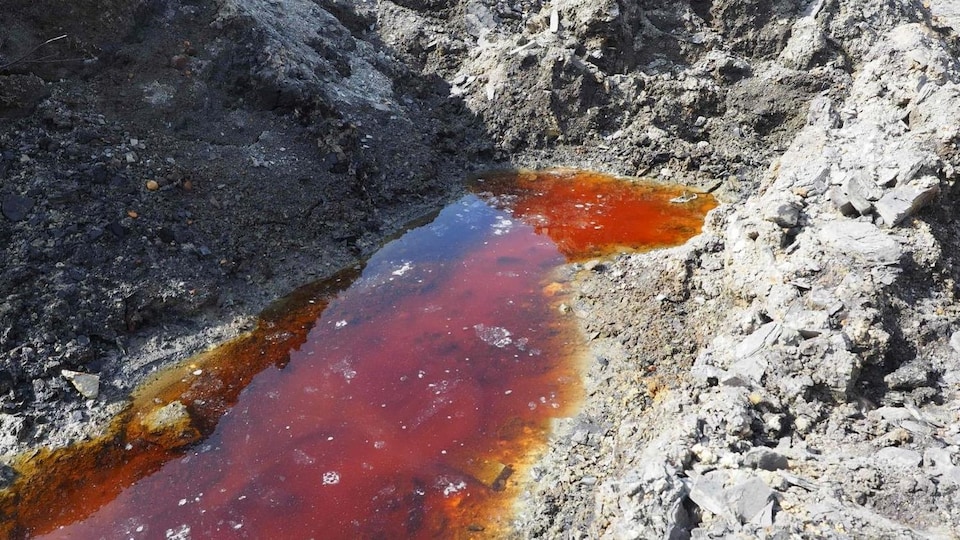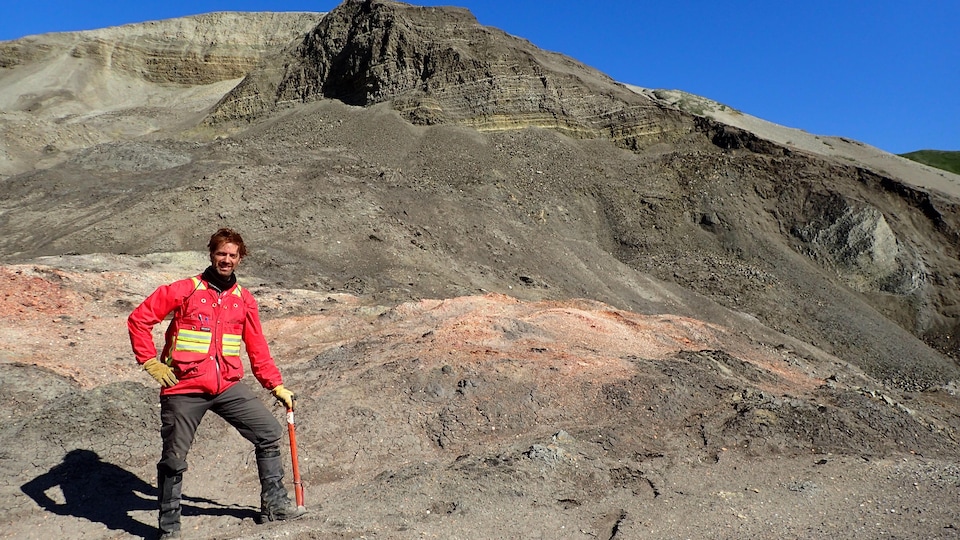
At least that’s what research undertaken by Steve Grasby, Natural Resources Canada research scientist at the Geological Survey of Canada, and his team suggests. The results of this research are published in the journal Chemical Geology.
Scientists visited the site of Smoking Hills, a geological formation located at the northern end of the mainland of the Northwest Territories. Named ingniryuat by the Inuvialuit who inhabit the area, these are rocks that produce smoke containing sulfuric acid.
This smoke releases metals into the environment and makes the water in the ponds in the area very toxic and above all very acidic. So much so that the lowest pH recorded on site is -1.4, explains researcher Manuel Bringué, biostratigrapher and one of the authors of the study.
” It’s so sour it’s negative. And it is to our knowledge the lowest natural pH that has ever been documented. It compares with mine tailings purification ponds. »
And what particularly interests researchers is that we find in this unique formation a fairly rare ore, which can be identified thanks to the yellow color that appears in the rock: jarosite.
A mineral found in the NWT and on Mars
Still according to the researcher, the jarosite was formed after the deposition of sediments accumulated in the bottom of the ocean 80 to 85 million years ago.
We know that at the time there was a lot of life in the oceans, a lot of primary productivity, a lot of plankton […] therefore life was very abundant.
According to Manuel Bringué, we also know that this mineral is present on Mars. So far, on land, it has mostly been documented in highly acidic lakes in Australia. These discoveries have led the scientific community to believe that conditions on the Red Planet are not very compatible with the formation of life.
What my colleague Steve [Grasby] just shown here is that jarosite does not necessarily indicate adverse conditions.
In a press release, Steve Grasby asserts that since the jarosite found on earth was formed in normal and life-sustaining marine conditions
the waters on Mars could have an almost neutral pH and therefore be suitable for this life.
Beware, however, that researchers are referring here to microorganisms, or microbes that are visible only under a microscope, and not to larger, multicellular organisms.
” We are talking here about the origin of life. Could Mars ever have [accueillir] of primitive life as it began on earth perhaps three billion years ago? »
Studying the Smoking Hills to understand Mars
This discovery raises an important question, especially in the context of research currently being carried out by NASA, points out Manuel Bringué.
There is enormous interest in understanding in what condition life can emerge on other planets.
And with the discovery of jarosite in Smoking Hillsan area much more accessible than the planet Mars, this could allow the American space agency to prepare its next missions on the red planet, thinks the researcher.
Now that this site has been identified as a potential analogue [de Mars] it gives scientists and engineers who are going to design the next instruments sent to Mars an opportunity to determine what they need, what sensor they need, what calibration they need to detect jarosite and related elements.
However, before thinking of returning there to continue studying the Smoking Hills and what they can teach us about Mars, Steve Grasby’s team will have to seek permission from local communities.
If agreed, they would like to study what happens to the metals contained in smoke and released into the environment, as well as the effects of global warming on the rate of release of these metals.
The article in the magazine Chemical Geology :

Reference-ici.radio-canada.ca

